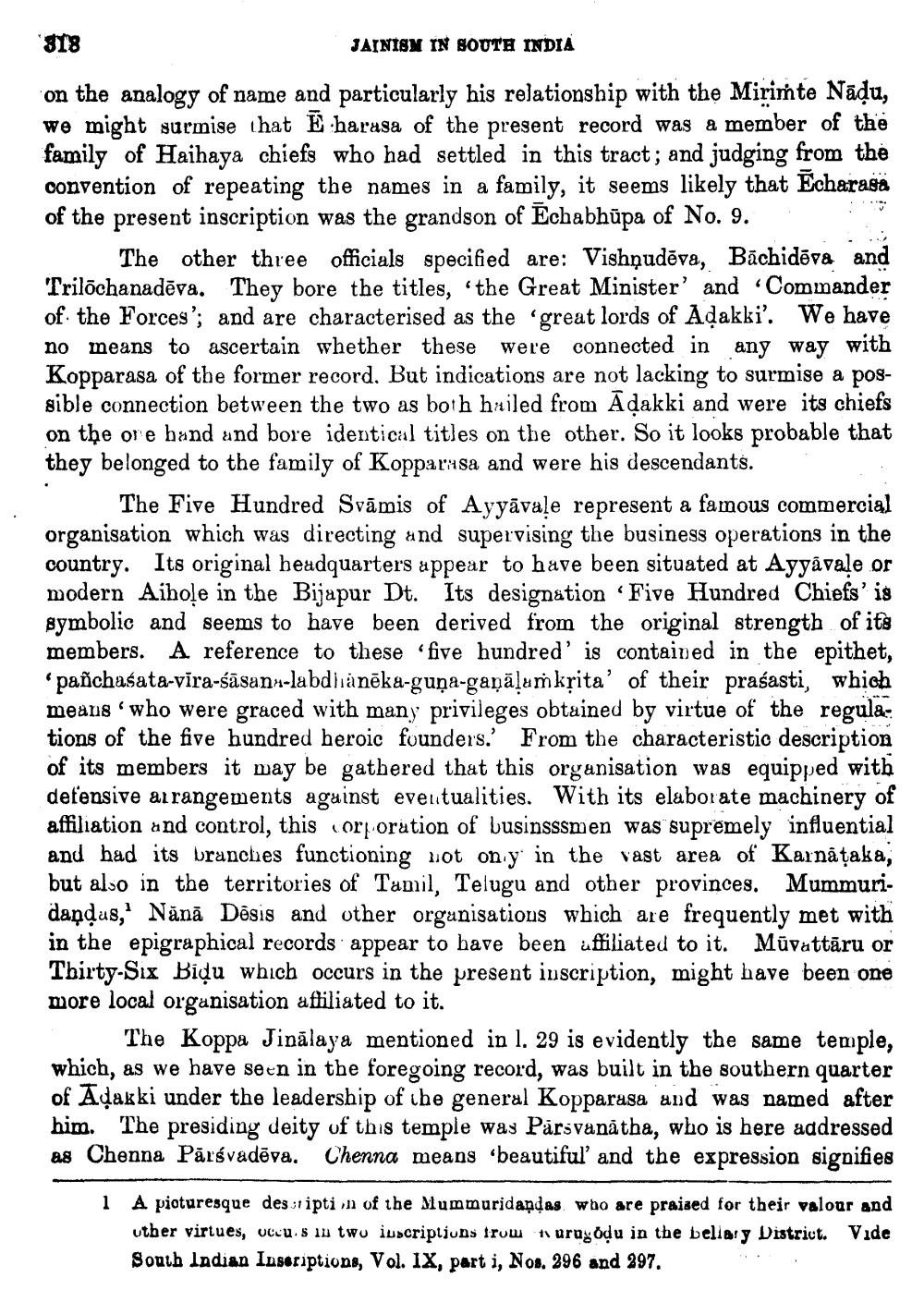________________
318
JAINISM IN SOUTH INDIA
on the analogy of name and particularly his relationship with the Mirimte Nādu, we might surmise that E harasa of the present record was a member of the family of Haihaya chiefs who had settled in this tract; and judging from the convention of repeating the names in a family, it seems likely that Echarasa of the present inscription was the grandson of Echabhupa of No. 9.
no
The other three officials specified are: Vishnudēva, Bachidēva and Trilochanadeva. They bore the titles, 'the Great Minister' and 'Commander of the Forces'; and are characterised as the 'great lords of Aḍakki'. We have means to ascertain whether these were connected in any way with Kopparasa of the former record. But indications are not lacking to surmise a possible connection between the two as both hailed from Aḍakki and were its chiefs on the ore hand and bore identical titles on the other. So it looks probable that they belonged to the family of Kopparasa and were his descendants.
The Five Hundred Svāmis of Ayyavale represent a famous commercial organisation which was directing and supervising the business operations in the country. Its original headquarters appear to have been situated at Ayyavale or modern Aihole in the Bijapur Dt. Its designation Five Hundred Chiefs' is symbolic and seems to have been derived from the original strength of its members. A reference to these 'five hundred' is contained in the epithet, 'pañchasata-vira-sasan-labdhanēka-guna-ganalamkrita' of their prasasti, which means 'who were graced with many privileges obtained by virtue of the regula tions of the five hundred heroic founders. From the characteristic description of its members it may be gathered that this organisation was equipped with defensive arrangements against eventualities. With its elaborate machinery of affiliation and control, this corporation of businsssmen was supremely influential and had its branches functioning not ony in the vast area of Karnataka, but also in the territories of Tamil, Telugu and other provinces. Mummuridandas, Nanā Dēsis and other organisations which are frequently met with in the epigraphical records appear to have been affiliated to it. Mūvattāru or Thirty-Six Bidu which occurs in the present inscription, might have been one more local organisation affiliated to it.
The Koppa Jinalaya mentioned in 1. 29 is evidently the same temple, which, as we have seen in the foregoing record, was built in the southern quarter of Adakki under the leadership of the general Kopparasa and was named after him. The presiding deity of this temple was Parsvanatha, who is here addressed as Chenna Parsvadeva. Chenna means 'beautiful' and the expression signifies
1
A picturesque description of the Mummuridandas who are praised for their valour and other virtues, occu.s in two inscriptions from surugoḍu in the bellary District. Vide South Indian Inseriptions, Vol. IX, part i, Nos. 296 and 297.




